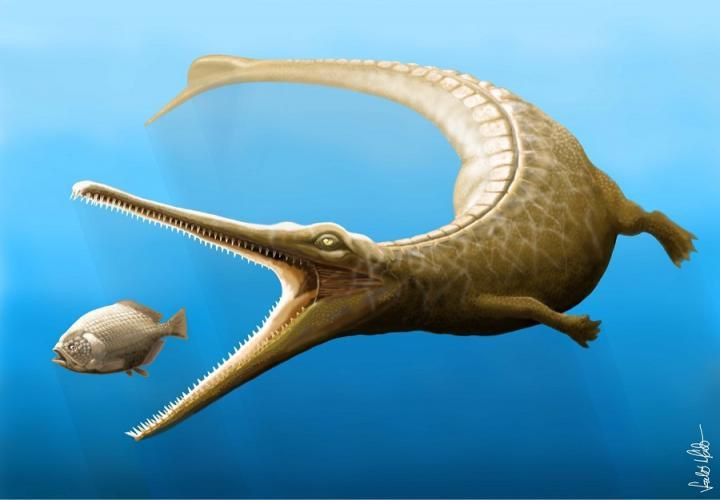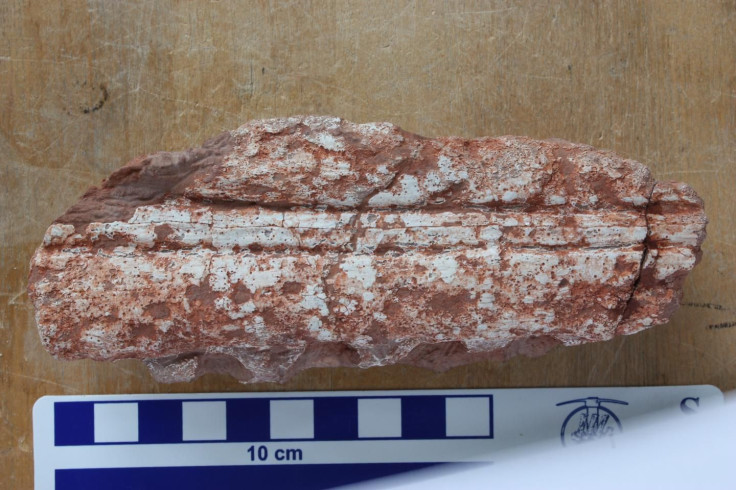Ancient Crocodile Species Identified From 180-Million-Year-Old Jurassic-Era Fossil

Scientists have identified a completely new crocodile species, one that had bodily features from different croc families and scoured depths of the ocean millions of years ago.
The discovery, which gives new insight into the evolutionary history of the marine predator, was made after a group of paleontologists examined a fossil unearthed from a Hungarian mountain range in 1996. It was kept at a museum in Budapest, but when the group analyzed the features on the bones, they were surprised.
The group found the specimen’s odd-looking vertebra formed part of its tail fin. This appeared like a mix of features from two different Jurassic-era families of crocodiles — one that had a bone-like protective armor on the back and belly as well as limbs for walking on the surface and other that missed out on the armor but had tail fins and flippers to help with swimming.
That said, the group believes this one might have been the link between the two species, hosting a bit of both features — the bony armor and the tail fin.
"This fossil provides a unique insight into how crocodiles began evolving into dolphin and killer whale-like forms more than 180 million years ago,” study co-author Mark Young from University of Edinburgh's School of GeoSciences said in a statement. “The presence of both bony armor and a tail fin highlights the remarkable diversity of Jurassic-era crocodiles."
Among other things, the research team also noted the specimen would have made one of the largest coastal predators of the Jurassic period. According to their analysis, it had sharp, pointed teeth for hunting down smaller animals and spanned 15-16 feet in length. In the honor of Attila Fitos, the amateur fossil collector who discovered the crocodile fossil, the new species has been called Magyarosuchus fitosi.
The work was backed by the Leverhulme Trust and the SYNTHESYS project, which is a part of the European Commission's Seventh Framework Programme. Crocodiles count among the most ancient species of vertebrates and serve as a critical link between the age of dinosaurs and modern-day birds. Scientists believe they have hardly changed over millions of years and could be the best source to learn more about extinct-dinosaurs and the evolution of birds.
In fact, recently, a group of scientists played Bach’s classics for a bunch of small crocodiles to see how the animals’ brains responded to complex sounds.
"Analyses of crocodile brains thus provide deep insights into the evolution of the nervous system in mammals and may help us understand at which point certain brain structures and behaviors associated therewith were formed," Felix Ströckens, the lead researcher behind the work, said in a statement.
The study, titled “A new large-bodied thalattosuchian crocodyliform from the Lower Jurassic (Toarcian) of Hungary, with further evidence of the mosaic acquisition of marine adaptations in Metriorhynchoidea,” was published May 10 in the journal PeerJ.

© Copyright IBTimes 2024. All rights reserved.





















